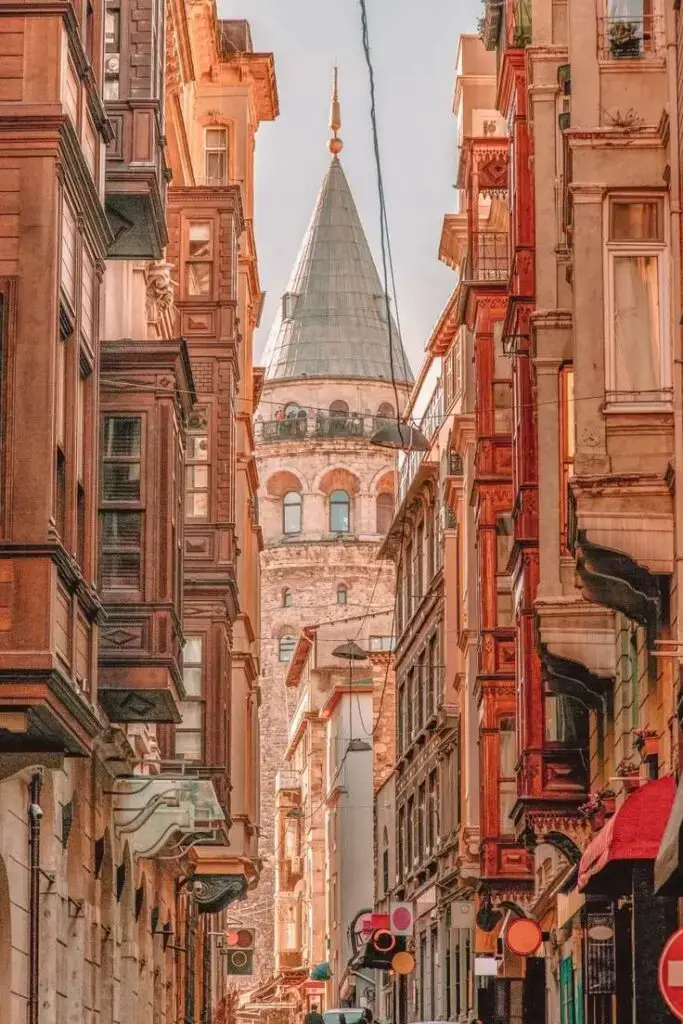Turkish architecture stands as a testament to the rich cultural and historical tapestry of Turkey, showcasing influences from various civilizations. You will discover how this unique architectural style reflects the country’s diverse history and artistic traditions. From ancient Anatolian structures to the magnificent mosques and palaces of the Ottoman Empire, each period has contributed its own distinct flavor.
As you explore the evolution of Turkish architecture, you’ll notice how geography and cultural exchanges shaped the designs, materials, and techniques used over the centuries. The grandeur of Istanbul’s skyline, defined by monumental structures like the Hagia Sophia and the Blue Mosque, highlights the significance of architectural innovation in this region.
Understanding the intricate details of Turkish architecture will deepen your appreciation for its beauty and complexity. You’ll learn about the essential elements that characterize notable buildings, such as domes, arches, and intricate tile work, each symbolizing the artistry and craftsmanship that define Turkey’s architectural heritage.



Key Takeaways
- Turkish architecture has evolved through various historical influences.
- Iconic sites in Istanbul showcase the richness of architectural diversity.
- Key architectural elements reflect the artistic traditions of Turkey.
Historical Evolution of Turkish Architecture
You can trace the development of Turkish architecture through distinct phases influenced by various cultures and historical events.
Influences from Byzantine to Ottoman Empire
Byzantine architecture laid the groundwork for later Turkish styles, characterized by domes, arches, and intricate mosaics. The Hagia Sophia in Istanbul exemplifies Byzantine innovation, impacting the Ottoman design ethos. After the conquest of Constantinople in 1453, the Ottomans adapted Byzantine elements, merging them with Islamic principles. This created grand mosques with expansive interiors, such as the Sultan Ahmed Mosque. The blend of Byzantine techniques and Islamic aesthetics shaped a unique architectural language that influenced subsequent structures across the empire.
Seljuk and Ottoman Architectural Styles
Seljuk architecture marked an important transition in Turkish architectural history. They introduced innovations like the grand mosque and intricate tile work. The Great Mosque of Divriği stands out for its elaborate carvings. Following the Seljuks, Ottoman architecture flourished, showcasing monumental structures. Notable examples include Sinan’s Süleymaniye Mosque, which highlights the use of large domes and minarets. Ottoman structural advancements, such as innovative support systems and decorative calligraphy, define this period. The balance between functional design and artistic expression became a hallmark of Turkish architecture.
Modernization and Western Influences
The late 19th and early 20th centuries saw significant shifts in Turkish architecture, influenced by Western styles. The First and Second National Architectural Movements aimed to establish a national architectural identity, drawing inspiration from both Seljuk and Ottoman legacies. Contemporary architects began to experiment with modern materials and techniques, blending tradition with modern aesthetics. Prominent Turkish architects like Behruz Çinici and Turgut Cansever championed this transition. Today, modern architecture in Turkey reflects a synthesis of historical elements and contemporary design, showcasing the ongoing evolution of Turkish architectural identity.



Iconic Architectural Works and Sites
Turkish architecture showcases a blend of historical and contemporary influences. This section highlights significant religious structures, royal residences, and modern institutions that define the architectural landscape of Turkey.
Historic Mosques and Religious Structures
Turkey features numerous historic mosques that exemplify exquisite craftsmanship and design. The Hagia Sophia, originally a cathedral, became a mosque and now stands as a museum, showcasing Byzantine mosaics alongside Islamic calligraphy.
The Selimiye Mosque in Edirne is renowned for its grand dome and intricate tile work, designed by the architect Mimar Sinan. Similarly, the Suleymaniye Mosque in Istanbul merges beauty with functionality, serving as a complex that includes a medrese (educational institution), and is a testament to Ottoman architecture.
Other notable places include the Nuruosmaniye Mosque, known for its Baroque style, and the Green Mosque in Bursa, celebrated for its stunning green tiles. The Ulu Cami in Bursa remains one of the oldest mosques, featuring impressive calligraphy and courtyard designs.
Palaces and Ottoman Residential Architecture
The palatial residences of the Ottoman sultans highlight the grandeur of Turkish architecture. Topkapı Palace, situated in Istanbul, served as the administrative center and residence of the sultans for centuries. It features expansive courtyards, ornate decorations, and important relics such as the Prophet Muhammad’s cloak.
The Dolmabahçe Palace illustrates a shift toward European architectural styles, with its lavish interiors and vast gardens aligning with the tastes of the 19th century.
Beylerbeyi Palace, located along the Bosphorus, serves as a summer residence for the sultans, featuring a blend of neoclassical and Baroque elements. These palaces reflect not only the artistic capabilities of the time but also the evolving lifestyle of the Ottoman elite.
Modern and Educational Structures
In contemporary Turkey, architectural innovation continues to thrive. The Atatürk Cultural Center in Istanbul stands as a symbol of modern design, featuring diverse cultural events and activities.
Educational structures like the Medrese exemplify the historical significance of Islamic education. These centers emphasize not only education but also cultural preservation, resonating with the architectural ethos of the past.
Modern buildings in urban centers blend traditional motifs with contemporary designs, illustrating the dynamic relationship between heritage and innovation. Through this architecture, you experience the rich legacy and the ongoing evolution of Turkish cultural identity.



Architectural Elements and Materials
Turkish architecture integrates distinctive design principles and a rich variety of materials, creating unique structures. Understanding these elements reveals the ingenuity behind historically significant sites.
Design Principles and Innovations
Turkish architecture showcases innovative designs that balance functionality and aesthetics. The work of Mimar Sinan, a master architect of the Ottoman era, illustrates this blend. He utilized pendentives to support domes, allowing for larger and more complex structures.
The deployment of Turkish triangles transitions square spaces into circular forms, pivotal in mosque design. These principles enabled the creation of expansive spaces illuminated by natural light. The Ottoman Baroque Style further refined aesthetics, adding ornate details while maintaining structural integrity.



Iconic Decoration and Ornamentation
Decoration in Turkish architecture is prominent, with Iznik tiles being a hallmark. These vibrant ceramic tiles often feature floral and geometric patterns that adorn mosques and palaces.
In addition to tiles, calligraphy and intricate carvings play crucial roles. Techniques such as stucco work enhance surfaces, creating a textural contrast. Structures like caravanserai demonstrate how ornamentation served both beauty and practical purposes, providing rest for travelers. This blend of utility and artistry defines the Turkish architectural identity.
Materials and Construction Techniques
Turkish architecture employs various materials, adapting to regional availability. Stone, brick, and mortar are commonly used, ensuring durability. In the construction of mosques, large motifs often rely on these materials to create impressive structures.
Innovations in construction techniques facilitated the creation of large domes and arches. Structures like those designed by Vedat Tek incorporate modern materials while respecting traditional styles. Notably, the use of hayat or courtyards inside buildings fosters light and ventilation, illustrating a thoughtful approach to climate and comfort.
These materials and techniques showcase a deep understanding of both artistry and engineering in Turkish architecture.






